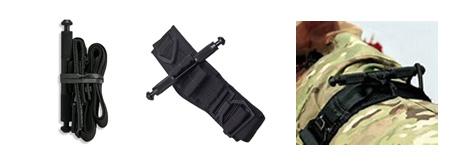Modern Tourniquet Design
December 22 2015
Pros
- Easy and effective
- Simple to carry
- Can be used for "practice" and for actual use
- Cost-effective / Economical
Cons
- Lack of proper training can lead to problems. *Prevent this - take the time to learn from a certified Instructor
Tourniquets were once considered to be a medical component reserved for medical experts only, perpetuating a negative connotation with their use. In the past 10 years or so, tourniquets have become much more common, even amongst layman. Among the many tools available that can potentially save lives, these seemingly simple items rank among the most crucial. In essence, a tourniquet is simply a tool that is used to restrict and seize blood flow to an injured limb if excessive blood loss (Arterial) is occurring.
Modern tourniquets are designed to be exceptionally easy to use and highly effective. They are simple to carry and unlike most medical equipment, users can practice with most of them without compromising the ability to be utilized later. Another benefit, they are remarkably cost-effective and economical, as even top-tier tourniquets on the market max out in the mid $20 range.
There are a few respective down sides to remark, the first being that while tourniquets themselves are readily accessible, few people attend proper training to learn how to utilize them. This is obviously not a short-coming with the tourniquets themselves, but it is an issue of concern. Tourniquets also get used incorrectly, which can actually cause damage to both the casualty and the tourniquet while attempting to utilize them. If a commitment is made to carry these items, they have a moral responsibility to learn how to apply them properly. Finally, a tourniquet should be "prepped" (pulled out of its wrapper and set up) ahead of time, facilitating rapid use for treatment in a crises situation. Again, this is more of a lack of training, understanding, and experience with users. There are definite causes of concern when it comes to the use of tourniquets, as well as people not searching out or attending proper training on how to utilize them properly.
If properly educated with the utilization of these valuable tools, this can be one of the greatest investments you ever make when it comes to potentially saving someone's life, including your own.
Add New
Comments
no comments found
